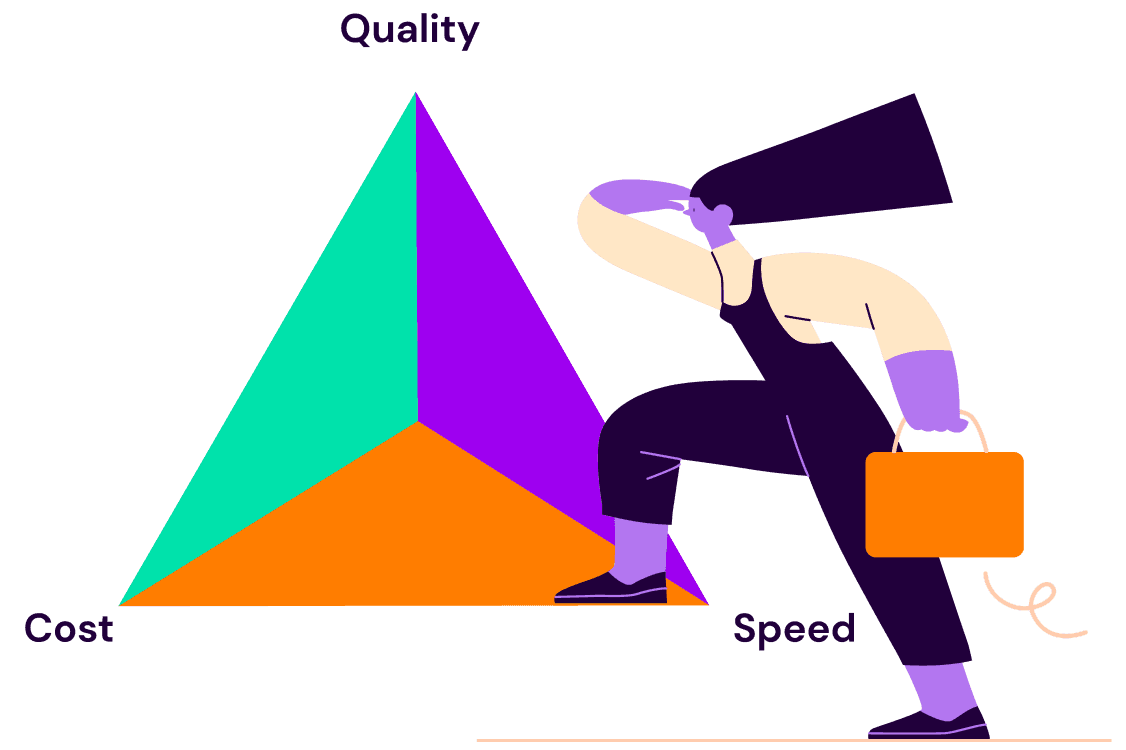
Back to blogs
Even well into the 21st century, women continue to face unique challenges in the workplace. Long-standing issues like the wage gap, the glass ceiling, and hostile work environments persist and new challenges caused by the COVID-19 pandemic have disproportionately affected women.
As we conclude Women’s History Month, let’s talk about five ways the pandemic has impacted women in the workplace, along with actionable things your organization can do to improve gender equity.
1. The pandemic severely impacted women’s well-being and career prospects
Only 22% of women believe their employers enabled them to set clear boundaries between work and personal hours during the pandemic while 77% say their workload increased during that time. And that’s on top of the childcare and household responsibilities that disproportionately fell on women during this time.
The endless responsibilities at work and home have negatively impacted women’s mental health and career prospects. 47% of women who changed working hours during the pandemic felt it hurt their relationship with their employer. And more than half of women feel less optimistic about their career prospects today than they did pre-pandemic, with 29% of those women citing poor mental health as one of the main reasons.
Sources: Deloitte “Women @ Work” report and Gallup “The Pandemic Hit Women Hard; Here's What Leaders Must Do Next”
How to support the women in your workplace:
Check in on the women in your workplace so those experiencing burnout don’t suffer in silence. Managers should conduct regular check-ins with employees to discuss workload, how they’re feeling, and how they’re progressing toward career goals. Even more, ask women how they are doing outside of work. Normalize sharing challenges, particularly related to childcare and life at home.
Real change needs to happen at the organizational level. Hold leaders accountable for creating initiatives and policies that support working mothers like flexible schedules, on-site childcare or stipends, extended maternity leave, mental health days, and wellness allowances.
2. Women continue to be underrepresented in leadership positions—especially women of color
Since 2016, women have made small gains at each rung of the corporate ladder, including a 5% increase in representation in the C-suite and a 3% increase in representation in senior VP-level roles. Still, progress toward gender balance at leadership levels is lagging—as only 86 women are promoted to management positions for every 100 men.
Unfortunately, women of color continue to be the most underrepresented group in the upper levels of organizations. They hold only 4% of C-suite positions and 5% of senior VP-level roles. For comparison, white men account for 62% of C-suite roles and 61% of senior VP-level roles.
Sources: McKinsey “Women in the Workplace 2021” report and IBM “Women, leadership, and miss opportunities” report
How to support the women in your workplace:
Many companies have made commitments to improve diversity but lack the data and technology needed to create and accomplish an actionable strategy. Truly improving representation requires first understanding the current diversity of the teams and levels in your organization, then benchmarking that data against the external talent pools you hire from. Using SeekOut, your recruiting team can identify realistic opportunities to improve diversity and surface qualified women of color for senior-level roles.
3. Of the few companies that make gender diversity a priority, less than half are making any real progress
Only 1-in-4 companies make the advancement and inclusion of women in the workplace a top ten priority. And of those well-intentioned companies, about half are struggling to make progress, according to their employees.
A survey of representatives from 429 organizations with strategic DEI initiatives found that:
Only 45% of companies have job succession plans that include women candidates.
Only 48% of companies ensure high-performing women receive promotions.
Only 49% of senior executives openly challenge gender-biased behaviors and language.
Source: IBM “Women, leadership, and miss opportunities” report
How to support the women in your workplace:
Ask your leaders to create a company policy that a certain percentage of candidates for every role must be women and create a goal to increase female representation in manager and leadership roles.
Hiring and promotions are only part of the solution. Foster a “see something, say something” culture where everyone is encouraged and expected to speak up when they encounter gender-biased behavior and language. That culture should be championed and vocalized by leadership so it permeates throughout the company.
4. Compensation is important but not everything for female job seekers
Gallup surveyed more than 13,000 people about what they want in their next job. Unsurprisingly, increased income and improved benefits were a top priority for both women and men. But after that, women and men had starkly different values in their jobs.
66% of women said work-life balance and well-being are very important (10% higher than men), 62% said being allowed to do what they do best is very important (9% higher than men), and 52% said diversity and inclusion are very important (23% higher than the men).
Source: Gallup“Recruiting Women Takes More Than Just Competitive Pay”
How to support the women in your workplace:
The reality is women care about these things because they have to. First and foremost, offer equitable compensation—then provide the secondary factors women value in their jobs.
As you make your company and workplace more inclusive for women, make sure that progress is reflected in your employee value proposition so you attract female candidates. Highlight how your company makes work-life balance, DEI, and work autonomy a priority on your careers website and candidate outreach messages. And when you connect with great female candidates, ask them what they're looking for in their next opportunity and work with the hiring manager to deliver it.
5. Companies with more women in leadership positions have better business results and happier employees
Harvard Business Review analyzed more than 150 companies and discovered that when women join leadership teams, their companies become more profitable, more socially responsible, and provide better customer experiences.
Additionally, female leaders are more likely to champion employee-friendly policies and DEI initiatives, as well as mentor and sponsor young women and women of color. Even more, a survey of employees with both male and female managers found that female managers are more likely to support their direct reports in the following ways:
Check-in on overall well-being (7% higher than male managers)
Make sure their workload is manageable (6% higher than male managers)
Help navigate work-life challenges (5% higher than male managers)
Take action to prevent/manage burnout (5% higher than male managers)
Sources: Harvard Business Review “Research: Adding Women to the C-Suite Changes How Companies Think,” McKinsey “Diversity wins: How inclusion matters” report, and McKinsey “Women in the Workplace 2021”
How to support the women in your workplace:
Leaders must provide women with opportunities for career growth and professional development so they move into high-level roles where they can make an impact. Provide each employee with personalized career paths that help them find trainings, colleague connections, and jobs within your organization that lead to career advancement.
But just as important, ensure all your female employees’ voices are heard. Women bring value to organizations in various ways so always be listening and learning from the perspective they offer.
Summary: Break down the barriers women face at work
Building a more inclusive workplace isn’t just the right thing to do. Winning companies know that gender equality is essential to their success. Here’s a quick recap of everything your organization can do to support women:
Check in with women about the challenges they’re facing in and outside the workplace.
Implement initiatives and policies that support working mothers.
Analyze the diversity of your workforce and create a realistic plan to hire more women of color, notably in senior-level roles.
Create a policy that a certain percentage of candidates for open roles must be women and provide career pathways for the women you hire.
Set an expectation that every employee speaks up when they encounter gender-biased behavior and language.
Provide equitable compensation first, then offer the secondary factors women value in a job.
Create an employee value proposition that reflects how your organization supports women so you attract female candidates.
Get women in management and leadership positions and listen to their ideas and perspectives.
Provide women with career pathways and professional development opportunities that help them advance in your organization.
It’s time to finally create an inclusive and supportive workplace for women. First, understand the challenges they face, then take action to solve them.
See us in action
Learn how SeekOut unifies people data to help organizations reach their talent goals
Request a demo




